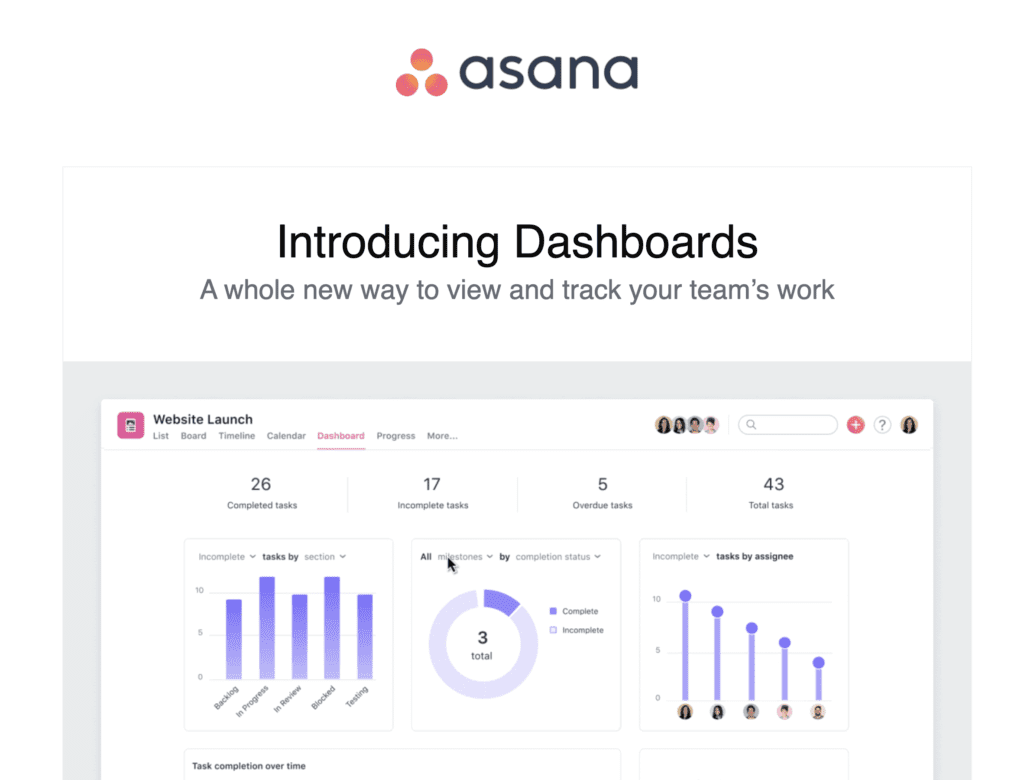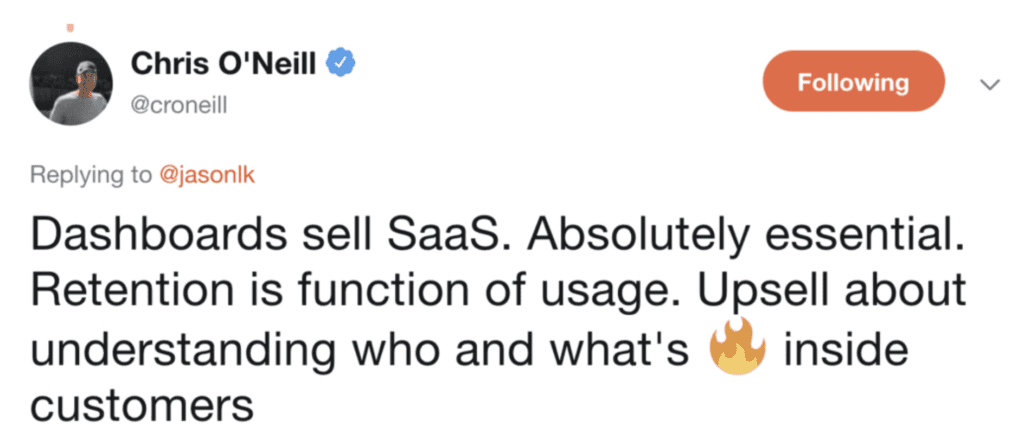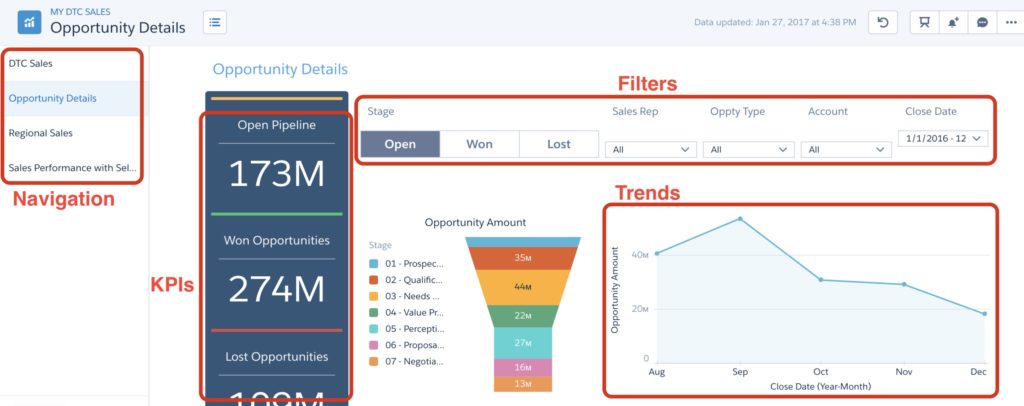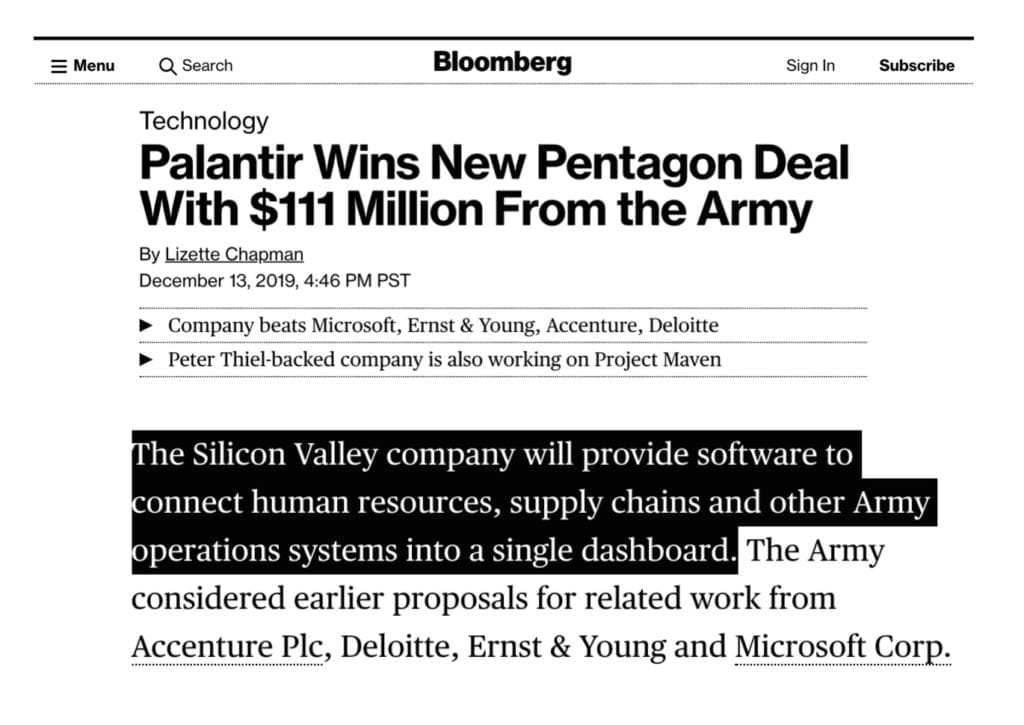How the top key features in enterprise SaaS have changed over time:
2005:
Custom Objects
Dashboards
Analytics2010:
Custom Objects
Dashboards
Analytics2015:
Custom Objects
Dashboards
Analytics2020:
Custom Objects
Dashboards
Analytics2022:
See Above
— Jason ✨Be Kind✨ Lemkin (@jasonlk) November 9, 2022
Sales still gets all the attention in SaaS, but the best investment you can make today is in your existing customers. The vast majority aren’t going anywhere, and may even upgrade to more seats.
So what’s my #1 bit of advice for a product feature to build for your existing customers?
A dashboard. A really good one.
I’ve done three different customer calls in three different contexts recently and heard variants of the same thing. The #1 thing they wanted was a dashboard, a better dashboard, and/or a way to show higher-ups in the org progress and ROI made using the app.
If you haven’t built a true enterprise app yet, you likely won’t intuitively get why a dashboard matters. You may even think they are kind of lame, or at least, low priority. After all, how often do you check your Slack dashboards yourself? And even when you do check “dashboards” from SMB-y apps, they often don’t even look like dashboards. They look like summary pages.
But a true enterprise dashboard is something different, and magical. It’s much more than a summary page. A true enterprise dashboard communicates value to all stakeholders. Even — and even especially — ones that never use the app.
If an organization spends $100k or more on a piece of enterprise software, often, the buyer’s boss will never use the app. Or almost never. How will your buyer’s boss know if the app is providing value? The key is the dashboard.
A winning dashboard has at least three elements:
- Requires zero work from the dashboard consumer. The data is automatically generated by the app.
- Provides genuine, and ideally daily, value to the key stakeholders. Whoever logs into your app every day should get genuine value from the dashboard, ideally more from it than any other part of the app. Challenge yourself here. It needs to be much more than just a random tab or a potential view. It should be the #1 place your key managers and stakeholders go.
and — importantly —
- Clearly displays the value of the app to the entire organization — including the CEO. This is the third part. The dashboard should show ROI to the whole company so clearly, that even the CEO gets value from it. Even if she has never even logged into the app. Think of a dashboard good enough to show at a board meeting. Make sure your core dashboard does that.
Many apps have dashboards in them that don’t quite meet all 3 prongs. They require some data entry (this falls apart in practice). They aren’t really what the core manager / power user needs to manage the app. And/or, the dashboard just doesn’t “sell up” on its own.
It can be hard to make one simple dashboard do all 3. That’s 3 personas to manage, after all. 😉
But do that, and magic happens.
You can charge so much more for your app. And deals will close faster — because stakeholders that aren’t your day-to-day believers will see value much more quickly. Renewals will be easier. And the best dashboards will force you to build better ways to visualize data for all users.
Don’t make your dashboard a throw away. Make it a core asset for your sales and customer success team. Get it right, and your competitors without a dashboard to show value will fade in bigger deals, or at least, have to fight it out at bottom of the market.

(note: an updated SaaStr Classic post on topic)



